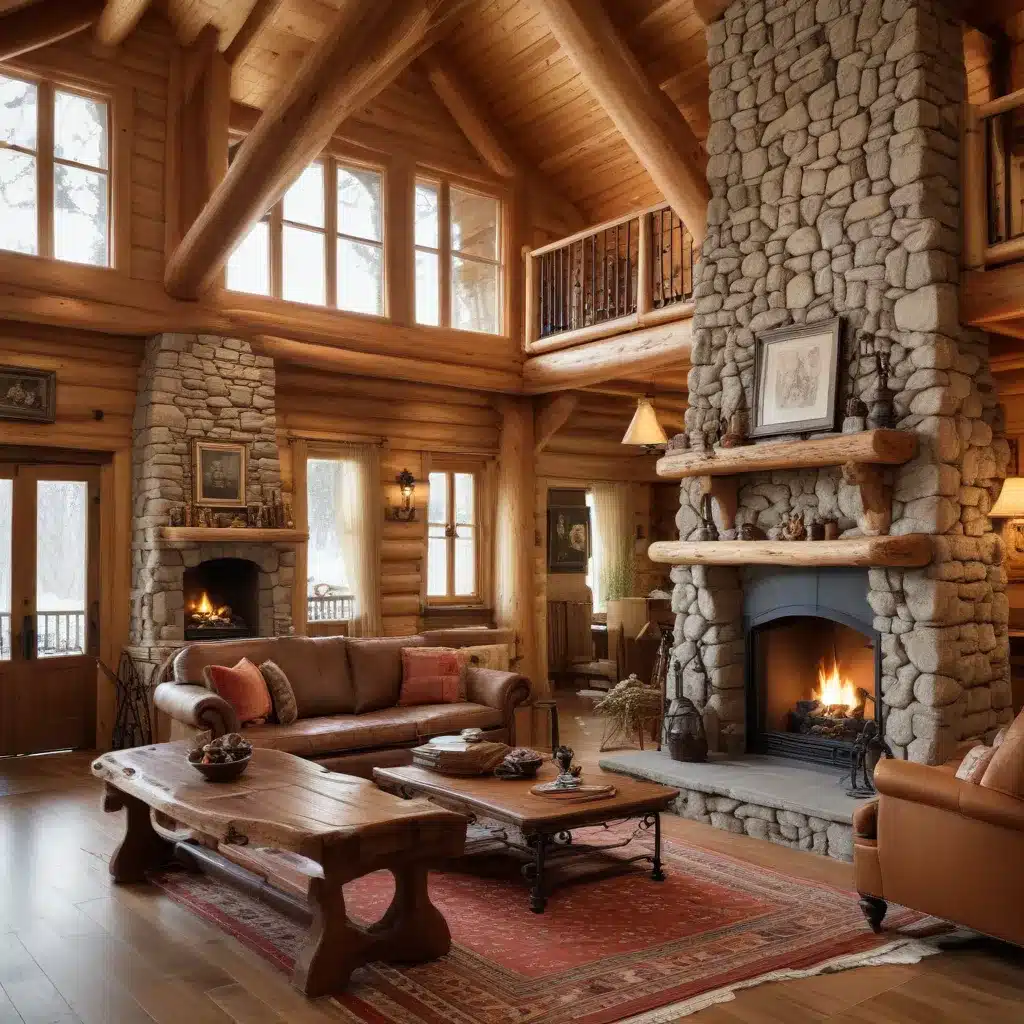
Embracing Sustainability and Craftsmanship in Log Home Construction
In the ever-evolving world of residential architecture, log homes have continued to captivate homeowners seeking a blend of traditional charm and modern conveniences. As we move into the future, the demand for sustainable, energy-efficient, and aesthetically pleasing log home designs has only grown stronger.
Constructing a log home is a meticulous process that requires a deep understanding of the unique challenges and considerations involved. From the selection of eco-friendly materials to the implementation of advanced building techniques, every aspect of log home construction plays a crucial role in creating a functional, comfortable, and visually appealing living space.
Selecting Sustainable Timber
The foundation of any log home lies in the selection of high-quality, responsibly sourced timber. In the United States, locally harvested and milled logs from sustainable forestry practices have become increasingly popular among homeowners and builders alike. Jorgensen Log Homes, a leading manufacturer of custom log homes, prioritizes the use of native wood species, such as Douglas Fir, Western Red Cedar, and Lodgepole Pine, which are not only aesthetically pleasing but also possess exceptional durability and insulating properties.
By opting for sustainably harvested timber, log home enthusiasts can take pride in the environmental stewardship their homes embody. These materials not only reduce the carbon footprint of the construction process but also contribute to the preservation of local ecosystems, ensuring that future generations can continue to enjoy the natural beauty that inspired the log home lifestyle.
Innovative Building Techniques
The construction of a log home is a true testament to the craftsmanship and expertise of the builders involved. Gone are the days of rudimentary log stacking; modern log home construction has evolved to incorporate advanced techniques that enhance structural integrity, energy efficiency, and overall aesthetic appeal.
One such innovative approach is the use of Scandinavian Cope-and-Tight joinery, a method that creates seamless, airtight connections between individual logs. This technique not only adds to the visual appeal of the home but also contributes to its thermal efficiency, helping to regulate indoor temperatures and reduce energy consumption.
Another cutting-edge method gaining popularity is the integration of structural insulated panels (SIPs) within the log home’s walls. These prefabricated panels, composed of a rigid foam core sandwiched between two layers of structural facing materials, provide exceptional insulation and minimize thermal bridges, leading to significant energy savings for homeowners.
Embracing Energy Efficiency
As the world becomes increasingly conscious of its environmental impact, the demand for energy-efficient homes has skyrocketed. Log homes, with their inherent thermal mass and natural insulating properties, are well-positioned to meet this growing need.
Through the strategic placement of high-performance windows, the integration of efficient HVAC systems, and the incorporation of renewable energy sources like solar panels, log home builders can create living spaces that not only exude rustic charm but also prioritize sustainability and long-term cost savings.
A well-designed log home can achieve remarkable energy efficiency, with some models boasting ENERGY STAR® ratings and meeting or exceeding the requirements of the International Energy Conservation Code (IECC). By investing in these energy-saving features, homeowners can enjoy lower utility bills, reduced carbon footprints, and the satisfaction of contributing to a more sustainable future.
Personalized Customization
One of the primary allures of log homes lies in their ability to be customized to suit the unique preferences and lifestyles of their owners. From the selection of log species and finishes to the incorporation of custom architectural elements, the possibilities for personalization are truly endless.
Homeowners seeking to blend old-world charm with contemporary flair may opt for a hybrid approach, seamlessly integrating modern design elements like sleek fireplaces, expansive windows, and open-concept floor plans within the traditional log home framework. This harmonious fusion allows for the creation of living spaces that are both visually striking and highly functional.
Furthermore, the integration of smart home technologies, such as programmable thermostats, energy-efficient lighting, and automated home systems, enables log home owners to enjoy the best of both worlds – the warmth and character of a rustic retreat combined with the convenience and efficiency of a modern abode.
Investing in Quality and Craftsmanship
Constructing a log home is a significant investment, both financially and emotionally. As such, it is crucial for homeowners to work with experienced professionals who can ensure the highest quality of workmanship and attention to detail.
In the United States, log home builders and manufacturers often employ skilled craftspeople, from master carpenters to specialized log home finishers, to meticulously handcraft each component of the structure. This dedication to quality craftsmanship not only ensures the structural integrity of the home but also adds to its timeless aesthetic appeal.
When it comes to the overall cost of a log home, several factors come into play, including the size of the home, the selection of materials, the complexity of the design, and the region in which the home is being built. On average, the cost of constructing a custom log home in the United States can range from $200 to $400 per square foot, depending on these variables.
Despite the initial investment, many homeowners find that the long-term benefits of owning a log home, such as energy efficiency, low maintenance, and increased resale value, make the expense well worth it. By prioritizing quality and craftsmanship, log home enthusiasts can create a lasting legacy for themselves and their families.
Conclusion
As the demand for sustainable, energy-efficient, and visually captivating living spaces continues to grow, the allure of log homes has only become more pronounced. By embracing innovative building techniques, carefully selecting eco-friendly materials, and prioritizing personalized customization, log home builders and homeowners alike can create stunning retreats that seamlessly blend old-world charm with contemporary comforts.
Whether you’re a lifelong admirer of log homes or simply seeking a unique and sustainable living solution, the opportunities to design and construct your dream log home have never been more abundant. With the guidance of experienced professionals and a commitment to quality craftsmanship, the journey to creating a truly remarkable log home awaits.


